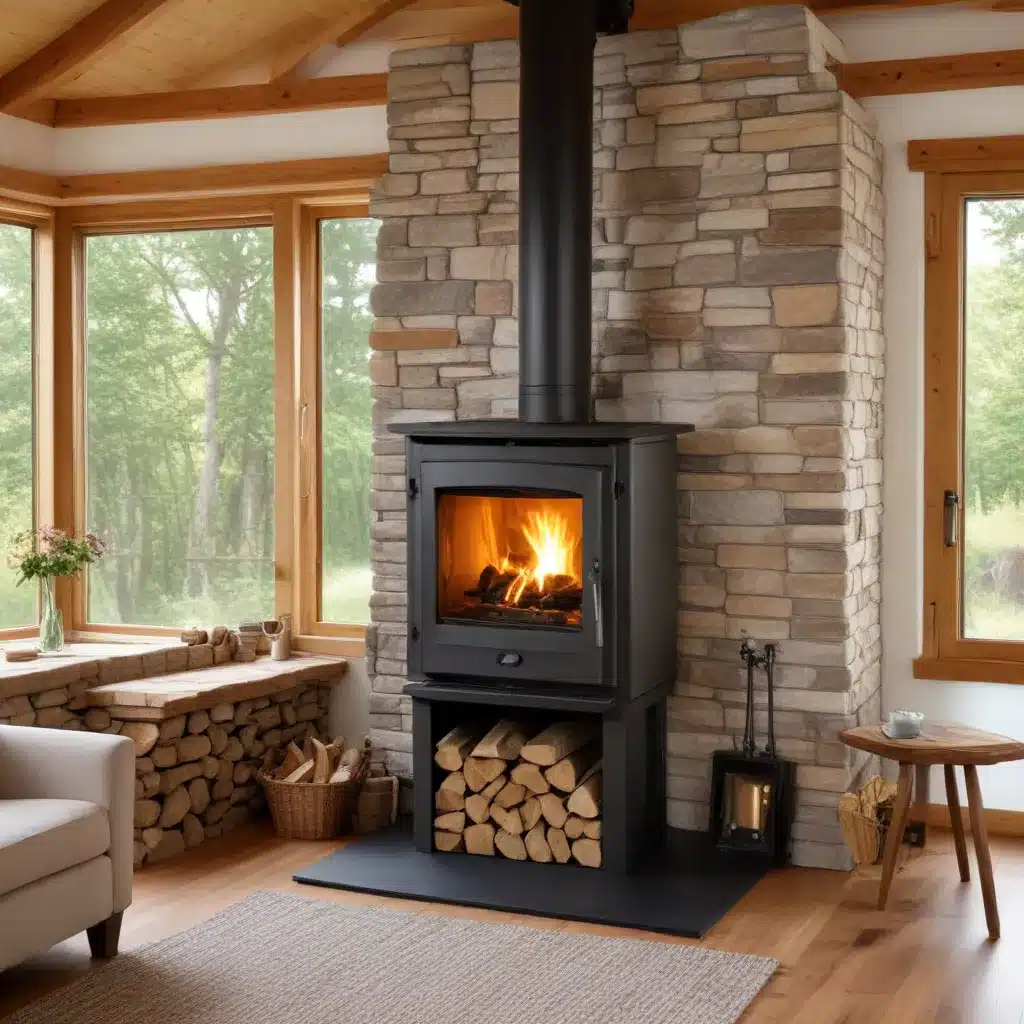
Optimizing Wood Stove Performance in Highly Insulated Homes
As a seasoned expert in wood stoves and heating solutions, I’ve seen firsthand how the right integration of wood stove technology can transform the energy efficiency and comfort of a home. In this comprehensive guide, we’ll explore the key considerations and best practices for incorporating wood stove heating into energy-efficient home design.
Achieving Balanced Heating with Thermal Mass
One of the common misconceptions about wood stoves is that greater thermal mass, such as a masonry chimney, automatically leads to more efficient and even heating. However, as a controls engineer, I can attest that systems with excessive thermal mass can be challenging to control effectively.
The issue lies in the inherent lag and inertia of large thermal masses. When the house is cold and you start a small fire, the masonry takes a long time to heat up, delaying the warming of the living space. Conversely, when you build a large fire to quickly heat the room, the thermal mass continues to release heat even after the room has reached the desired temperature, leading to overheating.
This thermal inertia makes it difficult to maintain a consistent, comfortable temperature throughout the day. Instead of relying on massive thermal masses, the key is to strike the right balance between responsive heating and thermal storage.
Sizing Wood Stoves for Superinsulated Homes
One of the most critical factors in integrating wood stoves into energy-efficient home design is proper sizing. In a superinsulated home, the heating load can be drastically reduced compared to a traditionally built house. As a general rule, you’ll need about 1 BTU per square foot of living space per Heating Degree Day to keep a well-insulated home comfortable.
This means that a smaller, more efficient wood stove may be all you need to maintain a cozy environment, even in a cold climate. Oversizing the wood stove can lead to overheating and control challenges, while undersizing may result in the stove struggling to keep up with the heating demands.
When selecting a wood stove, look for models with advanced features like catalytic combustion and extended burn times. Brands like Blaze King offer stoves that can run for over 20 hours on a single load, providing a steady, low-intensity heat that is well-suited for superinsulated homes.
Integrating Wood Stoves with Whole-Home Heating Systems
In an energy-efficient home, it’s essential to consider how the wood stove will interact with any supplementary heating systems, such as hydronic or electric heating. The goal is to create a balanced, integrated heating solution that takes advantage of the wood stove’s efficiency while ensuring reliable backup or supplementary heat.
One effective approach is to incorporate a water-heated thermal mass, such as a large insulated water tank, into the system. This allows the wood stove to charge the thermal mass, which can then be circulated through the home’s hydronic heating system. This setup provides the responsiveness of the wood stove and the even, consistent heat distribution of a water-based system.
Alternatively, you can explore the use of a wood boiler or furnace that can be integrated into the home’s central HVAC ducting. This approach allows the wood-fired system to seamlessly supplement or replace the primary heating source, ensuring a cohesive and efficient whole-home heating solution.
Maintaining Proper Air Supply and Ventilation
In a highly insulated, airtight home, ensuring adequate air supply and ventilation for the wood stove is crucial. Negative pressure within the home can lead to smoke spillage or poor combustion, compromising both efficiency and safety.
To address this, consider incorporating an outdoor air intake kit for the wood stove, which draws combustion air directly from the exterior. This helps maintain neutral pressure within the home, preventing any unwanted airflow issues.
Additionally, ensure that the wood stove’s chimney or flue is properly sized and insulated to maintain a strong draft, even in a superinsulated environment. A minimum height of 13-15 feet is generally recommended for Blaze King stoves, for example, to ensure a reliable draft.
Optimizing Wood Storage and Seasoning
Proper wood storage and seasoning are essential for maximizing the efficiency and cleanliness of your wood stove. Ideally, you should have a dedicated, covered storage area for your firewood, protected from the elements and elevated off the ground. This helps ensure that the wood is well-seasoned, with a moisture content of 20% or less, before being burned in the stove.
Seasoned wood not only burns more cleanly, with fewer particulate emissions, but also provides a more consistent heat output. This, in turn, helps you better manage the wood stove’s heat delivery and maintain a comfortable, energy-efficient environment throughout the heating season.
Embracing the Benefits of Wood Stove Heating
Integrating a wood stove into an energy-efficient home design can offer a host of benefits beyond just heating. When done right, a well-designed wood stove system can:
- Provide reliable, off-grid heating during power outages
- Reduce reliance on fossil fuels and lower your home’s carbon footprint
- Offer a satisfying, hands-on connection to the heating process
- Add character and ambiance to your living spaces
By carefully considering the factors discussed in this article, you can seamlessly incorporate wood stove heating into your energy-efficient home, creating a comfortable, sustainable, and self-sufficient living environment.
For more information on wood stove heating and energy-efficient home design, I encourage you to visit woodstoveheaters.com. The team at Wood Stove Heaters is dedicated to providing expert guidance and practical solutions to help homeowners like you achieve their heating and energy efficiency goals.


